How to Stop Dogs From Fighting in the Same Household?
Nothing is more upsetting than having your two precious furballs going at it. With all the posturing, snarling, and snapping, two dogs fighting is a fearsome thing, especially when they are yours!
Dogs that don’t get along are a recipe for a difficult time for both dogs as well as their owners. It is important to nip this behavior in the bud before it escalates into a more serious situation that results in injuries or worse.
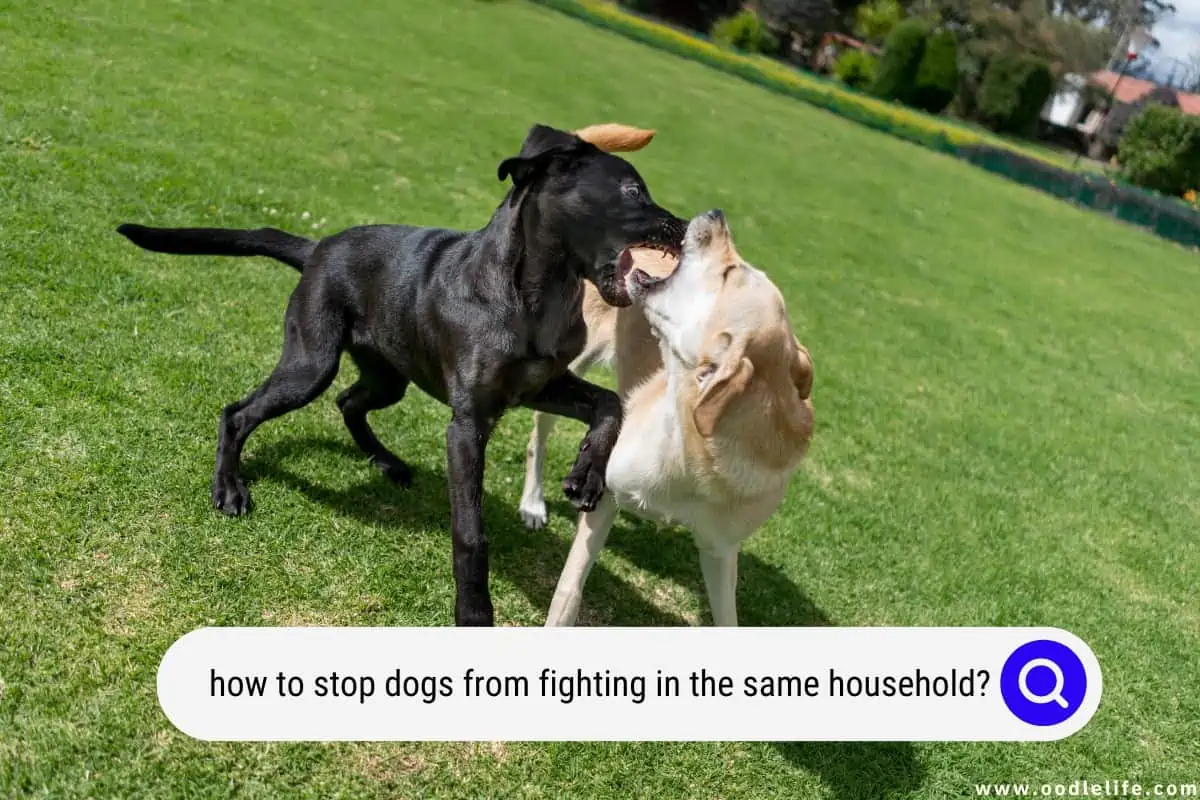
In this blog post, we’ll look at all the ways you can prevent two snarky dogs from going at each other, but first, let’s take a look at why they just CAN’T seem to get along!
Why Do Dogs Fight In The Same Household?
There are several reasons why dogs may fight within the same household. Some of the most common causes include:
1. Lack of Training and Socialization
Dogs that have not been properly trained and socialized may be more prone to fighting with other dogs, especially if they are not used to being around other animals. It’s important to expose puppies to a variety of people and other animals in a positive and controlled way and to continue to provide socialization and training throughout their lives.
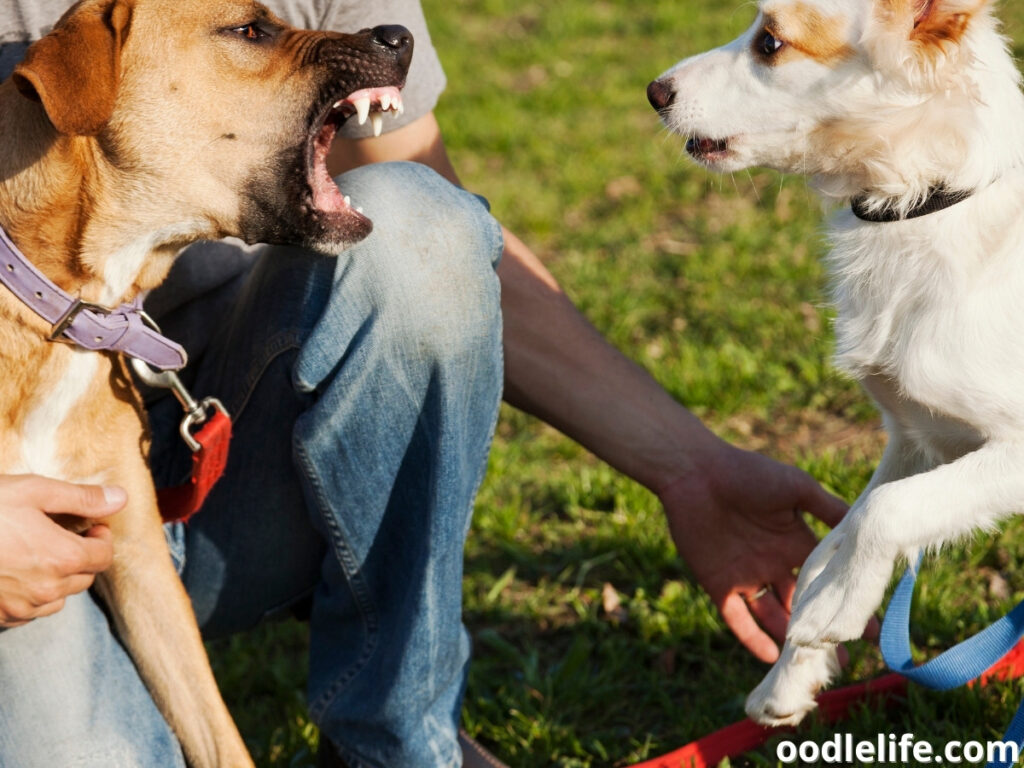
This can help them learn to communicate and interact appropriately with other dogs and reduce the likelihood of aggression.
2. Lack of Strong Leadership
Dogs are social animals and require a clear hierarchy within their pack. If they do not feel that they have a leader, they may try to establish dominance through fighting. Owners must establish themselves as their pack’s leader and provide clear rules, boundaries, and expectations for their dogs.
This can help to prevent conflicts and establish a more harmonious household.
3. Competition for Resources
Dogs often fight over food, toys, and other resources they perceive as limited or valuable. To prevent resource-related aggression, it’s essential to provide plenty of resources for all dogs in the household and to teach them to share and take turns. It can involve separating dogs while they eat or providing separate toys and resources.

4. Territorial Behavior
Dogs may become aggressive towards other dogs that they see as intruders in their territory, whether it’s their home, yard, or even their owner’s lap. To prevent territorial aggression, it’s important to establish clear boundaries and teach dogs to respect each other’s space.
This may involve providing separate areas for each dog and setting clear rules about which areas are off-limits.
5. Stress or Anxiety
Dogs may become more reactive and prone to aggression if they are experiencing stress or anxiety due to changes in their environment or routine. Identifying and addressing the sources of stress or anxiety is important to reduce aggressive behavior.

Provide a stable and consistent routine, ensure that dogs have plenty of physical and mental stimulation, and address any underlying medical issues contributing to stress or anxiety.
6. Medical Issues
In relatively uncommon cases, dogs may display aggressive behavior due to underlying medical conditions, such as pain or hormonal imbalances.
If you suspect a medical issue may be causing aggressive behavior, it’s crucial to consult a veterinarian to determine the cause and develop a treatment plan.
Warning Signs of An Impending Fight Between Your Dogs
Learning to watch for signs that a scuffle is on the way makes it easier for you to handle the situation before it becomes a full-blown WWIII.
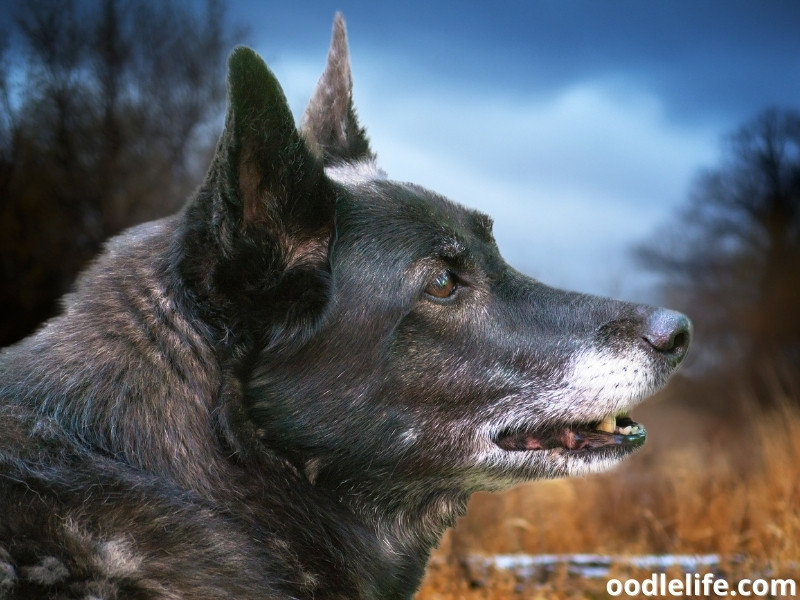
Here are some warning signs that a fight between dogs may be imminent:
- Stiff body posture
- Hackles (the hair on the back of the neck) raised
- Ears pinned back
- Growling, snarling, or snapping
- Lunging or charging at the other dog
- Flashing teeth or showing their teeth in a snarl
- Avoiding eye contact or staring intensely at the other dog
- Tail wagging low or not wagging at all
How To Prevent And Stop Fights?
While stopping the fight seems like your first priority, only do so when it is safe. Getting between two fighting dogs, even if they are your own lovable pooches, often results in an accidental bite that might earn you a trip to the emergency room.
1. Limit Rough Play
Rough play between dogs can be a lot of fun, but it can also lead to fights if not properly managed. To prevent and stop fights from occurring during rough play, it’s vital to limit rough play and closely supervise your dogs when interacting.
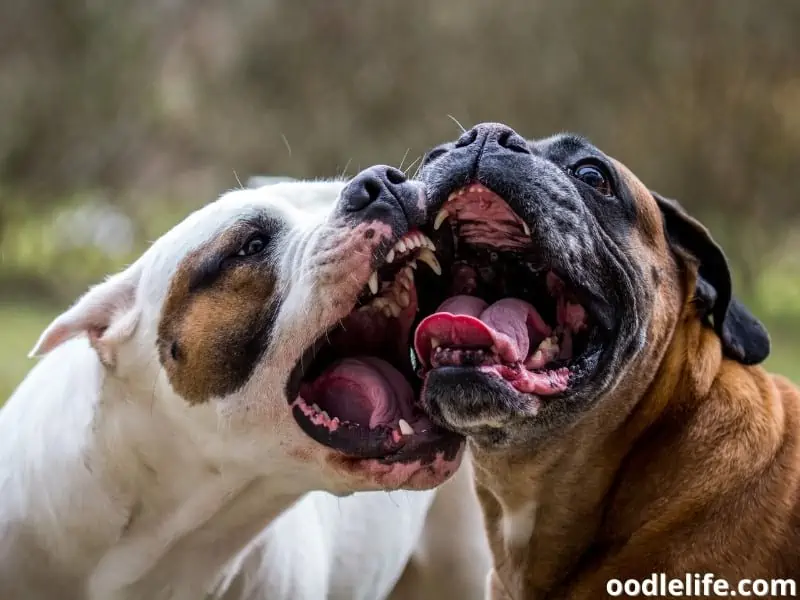
Use positive reinforcement to reward good behavior and appropriate play, and interrupt and redirect if play becomes too rough or aggressive. If necessary, separate the dogs and give them a break from each other.
2. Encourage Calm Behavior
Encouraging calm behavior in dogs can be an effective way to prevent and stop fights from occurring in the same household. Teaching your dogs to remain calm and relaxed in potentially stressful or triggering situations can help reduce the likelihood of aggression.
3. Manage The Environment
Managing the environment in which dogs live and play can do wonders. Adjustments to the physical layout and routine of your home can create a more harmonious living situation for your dogs and reduce the likelihood of aggression.
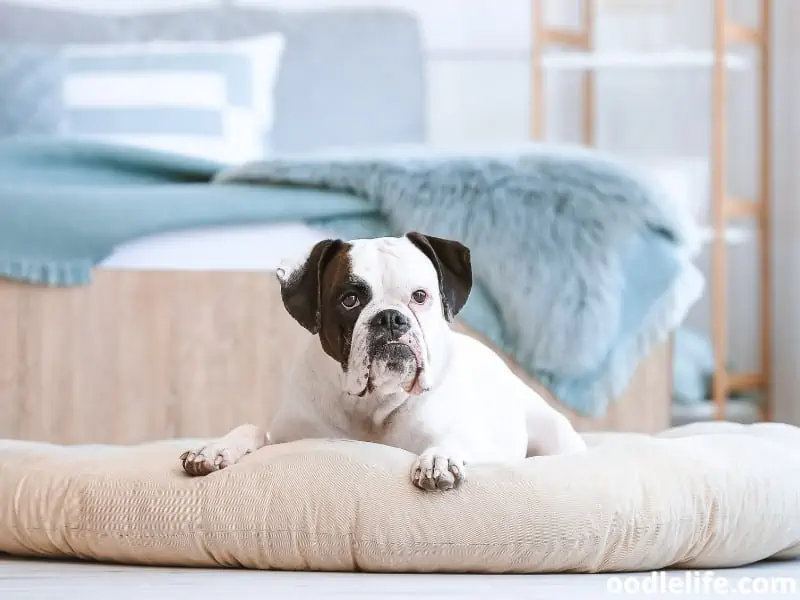
You can give each dog its own space, set clear boundaries, remove potential triggers like toys or food, and separate the dogs when things get a little too rough.
4. Chose Dogs Of the Opposite Sex
Male and female dogs often have different behaviors and communication styles, and choosing dogs of the opposite sex can help to balance these differences and reduce the likelihood of conflict.
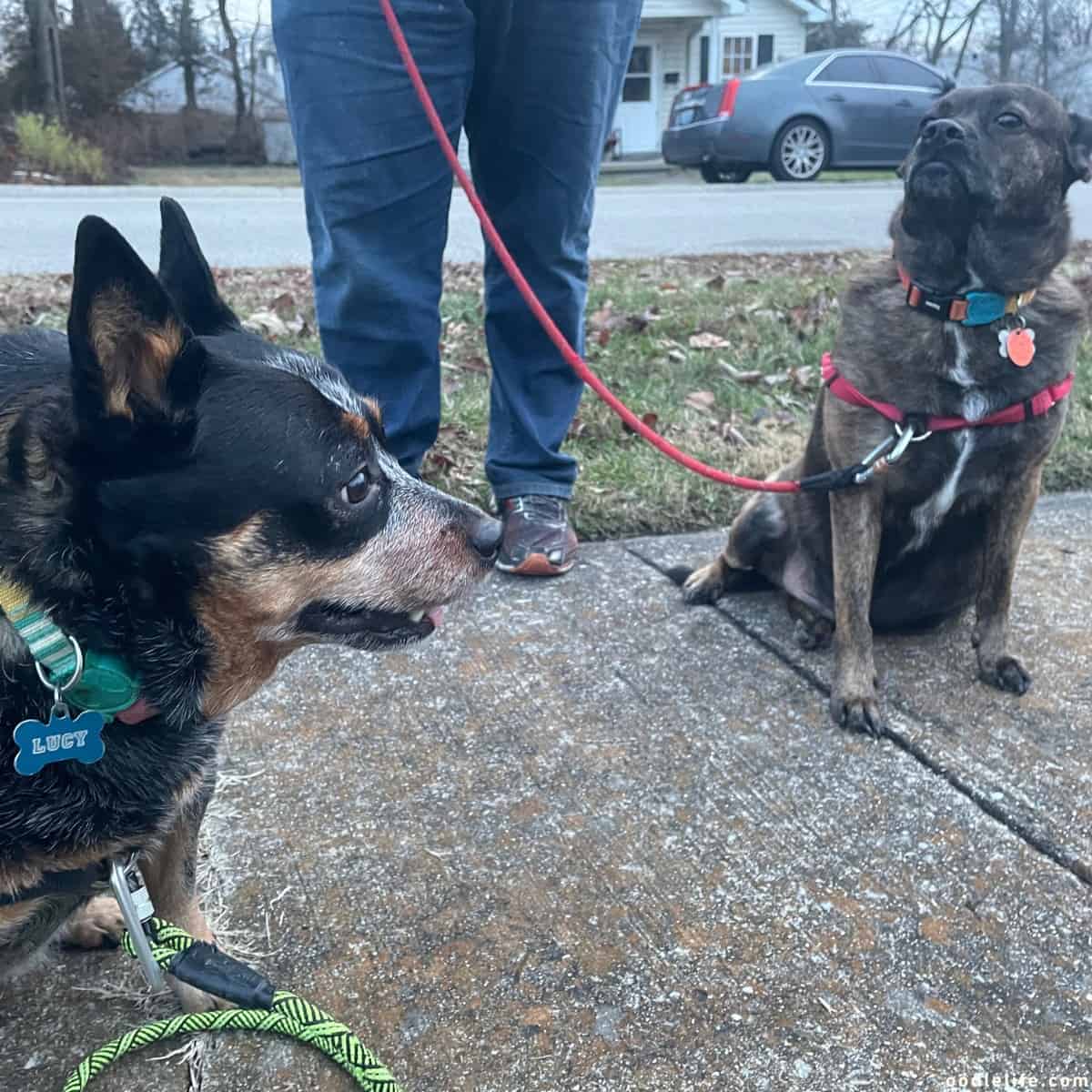
Having said that, it’s important to note that this is not a guarantee and that all dogs, regardless of sex, should be properly trained and socialized to prevent aggression.
5. Obedience Training
By teaching your dogs to follow basic commands, such as “sit,” “stay,” and “come,” you can establish a clear hierarchy and help to prevent misunderstandings and conflicts. Obedience training can also help reduce the likelihood of aggression by teaching dogs to communicate and interact appropriately.
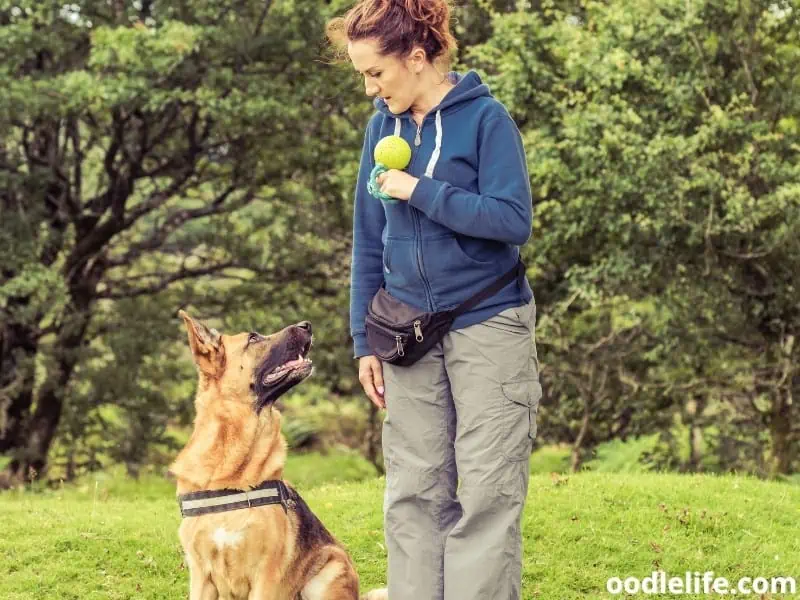
6. Make A Sudden, Loud Noise
If you have dogs in the same household prone to fighting, one way to stop and prevent fights is to make a loud noise. This can be as simple as clapping your hands or shouting in a loud, firm voice. The sudden, loud noise can startle the dogs and interrupt their aggressive behavior.
It’s important to remember to stay safe and avoid getting bitten while attempting to intervene in a dog fight. Making a loud noise is just one tool you can use to prevent and stop dog fights, but it may not always be effective.
7. Throw a Blanket Over The Dogs
This technique works by disrupting the dogs’ vision and breaking their focus on each other. When the dogs can’t see each other, they may lose interest in continuing the fight.
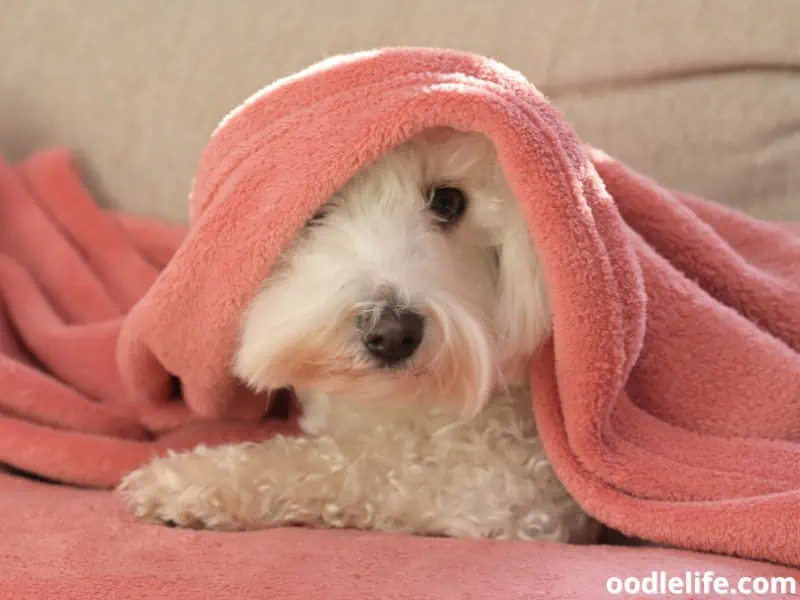
It’s important to approach the dogs cautiously and try to cover them evenly with the blanket to avoid getting bitten. Keep in mind that this method may not work in all situations and is best used as a last resort.
8. Use a Spray Bottle
Spray bottles filled with water can be an effective tool to interrupt and prevent dog fights in the same household. When dogs are squabbling or getting ready to fight, a quick spritz of water can distract them and interrupt aggressive behavior.
The surprise of the water and the unpleasant feeling of getting wet can be enough to halt the fight before it starts.
Spraying both dogs evenly is important to avoid singling out one as the instigator. It’s also important to remember to never use the spray bottle as a punishment or in a way that could frighten or hurt the dogs. It should be used as a neutral, interruptive tool to redirect their behavior.
9. Use Objects To Separate Dogs
One effective method for preventing and stopping dog fights is by using objects to separate the dogs. These objects can include anything that can be used as a physical barrier between the dogs, such as a baby gate, a crate, or even a large piece of furniture.
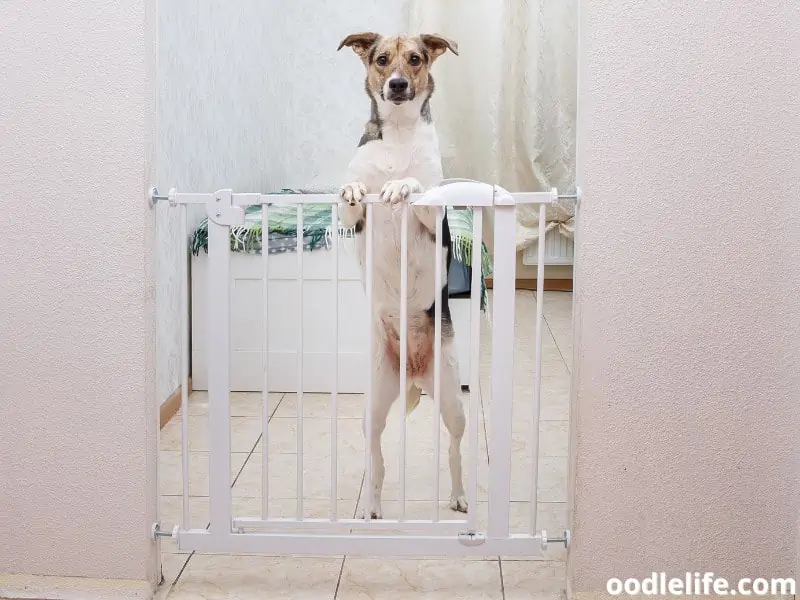
By separating the dogs and giving them their own space, you can help prevent the trigger for a fight and give them time to calm down.
10. Professional Training
When all else fails, you’ll need professional help from a doggy trainer. The trainer will identify the main cause of fighting which might be a lack of leadership, boundaries, or rules.
Once the root cause has been identified, the trainer will work with you to establish clear leadership and establish rules and boundaries for the dogs. This might involve setting up a structured feeding routine, giving the dogs separate areas to sleep in, and teaching them to listen to commands.
In addition to addressing the underlying causes of the fighting, the trainer may also teach you how to interrupt and stop a fight if one does occur.
By working with a professional trainer and following their guidance, you can not only stop dog fights within your household but also prevent them from occurring in the first place.